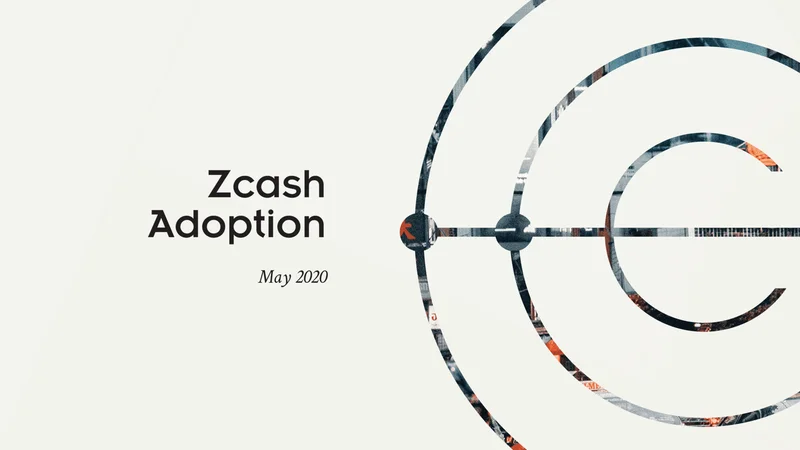Anatomy of a Breakout: Deconstructing the Data Behind Zcash's Volatile Resurgence
For years, Zcash (ZEC) was a ghost in the machine. A pioneering privacy coin that, for all its technical merit, had faded into the background noise of the crypto market. Its chart was a long, desolate flatline, a testament to market indifference. Then, in a sudden jolt, the ghost came back to life. The price surged over 250% in a matter of weeks, peaking at around $173, a level unseen in years.
This isn't just another altcoin pump. The Zcash event is a fascinating case study in the collision of narrative, market mechanics, and speculative frenzy. On the surface, the story is straightforward: a renewed interest in privacy is driving fundamental demand. But when you look at the data—the actual numbers behind the move—a more complex and volatile picture emerges. My analysis suggests we're witnessing less of a fundamental reawakening and more of a violent market dislocation, fueled by a perfect storm of catalysts.
Let's dissect the components.
Every market rally needs a story, and Zcash suddenly has a compelling one. The initial spark came from ShapeShift, the DEX aggregator that once delisted privacy coins back in 2020 under regulatory pressure. In a significant reversal, the now-decentralized ShapeShift DAO announced it would reintegrate support for shielded Zcash transactions, backed by a $50,000 grant from the Zcash community (Shapeshift revives privacy focus with Zcash shielded support).
This is more than just a technical update. It’s a symbolic reclamation of crypto’s cypherpunk roots. ShapeShift’s representative was clear: the centralized company that bowed to regulators is gone, replaced by a community-governed DAO. This move directly counters a growing tide of regulatory hostility, particularly from the European Union, which appears set to ban anonymous crypto accounts by 2027. In a market increasingly anxious about surveillance, the demand for a censorship-resistant "dark stablecoin," as CryptoQuant's CEO put it, becomes a powerful selling point.

This narrative was then amplified by a handful of high-profile endorsements. Naval Ravikant called Zcash "insurance against Bitcoin." Mert Mumtaz of Helius Labs championed its privacy features. This is the kind of social proof that can break an asset out of a prolonged slumber. Suddenly, Zcash wasn't just a relic; it was a relevant hedge against overreach. The market, starved for a fresh story, latched on.
And this is the part of the cycle that I find consistently predictable. A dormant asset with a strong, albeit neglected, technical foundation is given a new narrative lease on life. The story spreads, early adopters move in, and the price begins to creep up. But what happened next with Zcash wasn't a creep. It was an explosion. And that requires looking past the story and into the market's plumbing.
The narrative may have lit the fuse, but the market structure provided the gunpowder. According to Token Terminal, only about 30%—to be more exact, just under one-third—of ZEC's total supply is in active circulation. This is a critically important data point. A low circulating supply, or "float," acts like a financial pressure cooker. With a limited number of coins available on the open market, even a moderate increase in buying pressure can lead to disproportionately large price swings. Any imbalance between buyers and sellers is dramatically amplified.
And the imbalance was anything but moderate. Trading volume skyrocketed from a baseline of roughly $500 million to over $4 billion in a single day. The chart, once a placid lake, suddenly looked like a seismograph during an earthquake. This wasn't just institutional interest from a new Grayscale ZEC trust fund (a significant, but not immediate, catalyst). A $3.5 billion increase in daily volume is the signature of a massive speculative influx, triggering a cascade of liquidations for anyone betting against the coin. Millions in short positions were vaporized, adding fuel to the fire.
This is where the story disconnects from the data. While the privacy narrative is a valid long-term thesis, the price action we saw was pure market mechanics. It was a classic low-float squeeze, amplified by a timely narrative and a rush of momentum traders. The Stochastic RSI, a key momentum indicator, screamed into overbought territory and stayed there, signaling speculative exhaustion. The subsequent 10% pullback was not a surprise; it was an inevitability (Zcash drops 10% after explosive rally – ZEC’s road ahead is unclear). The market was simply catching its breath after a full-on sprint.
So, the key questions remain unanswered by the headlines. How much of that $4 billion in volume was genuine, long-term accumulation versus algorithmic momentum trading? And with the price now correcting, is this a healthy cooldown before the next leg up, or is the speculative fever breaking, leaving the price to fill the massive imbalance it created around the $120 level? The futures market suggests some traders are still placing long bets, providing potential support. But the spot market tells a story of extreme, and perhaps unsustainable, volatility.
Let's be precise. The renewed focus on Zcash's privacy tech is a legitimate fundamental development. But the 250% price surge in a few weeks is not. The data points to a market structure event—a violent repricing driven by a low float, a short squeeze, and a wave of speculative capital chasing a new story. The fundamentals are the excuse, not the cause. The speed and magnitude of the rally, followed by the immediate double-digit correction, are hallmarks of a speculative mania, not a measured institutional re-allocation. The road ahead isn't just unclear; it's a minefield of volatility. The narrative is sound, but the price is unhinged from its underlying reality.